Read on below to learn more about the latest Pokémon TCG: Scarlet & Violet expansion:
Arceus VSTAR Strategy: Improving a Winning Deck with Scarlet & Violet—Obsidian Flames
The latest expansion adds new tools to take an already powerful deck to the next level.
By Natalie Millar, Contributing Writer
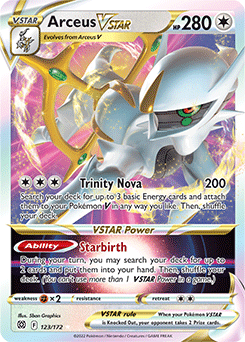 The new Scarlet & Violet—Obsidian Flames expansion has significantly shaken up the metagame, both by adding new decks to the Standard format and by breathing some new life into older options. Ever since regulation mark D rotated out of Standard, the Arceus VSTAR decks have been more focused on side attackers, such as Duraludon VMAX, Umbreon VMAX, or Giratina VSTAR. However, with the recent release of Pidgeot ex, it has become possible to play a deck centered around just Arceus VSTAR again. This was previously seen with the popular Arceus VSTAR / Inteleon archetype, which simply tried to loop Cheren’s Care to slowly defeat your opponent. While Inteleon has rotated out of Standard, Pidgeot ex’s Quick Search Ability can act as a viable alternative to Shady Dealings and allow the slower style of Arceus VSTAR to rejoin the action!
The new Scarlet & Violet—Obsidian Flames expansion has significantly shaken up the metagame, both by adding new decks to the Standard format and by breathing some new life into older options. Ever since regulation mark D rotated out of Standard, the Arceus VSTAR decks have been more focused on side attackers, such as Duraludon VMAX, Umbreon VMAX, or Giratina VSTAR. However, with the recent release of Pidgeot ex, it has become possible to play a deck centered around just Arceus VSTAR again. This was previously seen with the popular Arceus VSTAR / Inteleon archetype, which simply tried to loop Cheren’s Care to slowly defeat your opponent. While Inteleon has rotated out of Standard, Pidgeot ex’s Quick Search Ability can act as a viable alternative to Shady Dealings and allow the slower style of Arceus VSTAR to rejoin the action!
The Main Strategy
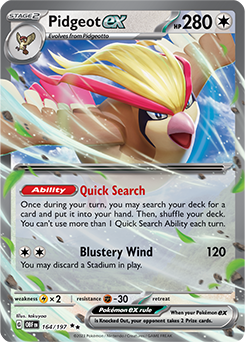 The core of this deck is Arceus VSTAR itself. Its Trinity Nova attack hits for 200 damage (180 with a Double Turbo Energy attached) and accelerates 3 Basic Energy out of your deck onto any other Pokémon V, which in this deck is always another Arceus VSTAR. To support this, we have Radiant Greninja and Pidgeot ex. Radiant Greninja’s Concealed Cards Ability lets you discard an Energy card to draw 2 cards, which is helpful both for letting you use Melony and for finding something to do with your extra Energy, as you need very little throughout a game. Pidgeot ex’s Quick Search Ability is the whole reason to play a deck like this. This isn’t the first time we have seen Quick Search on a Pidgeot, of course. The Pidgeot in the EX FireRed & LeafGreen expansion saw a ton of success back in its day with its Quick Search Poké-Power…nearly 20 years ago! This kind of Ability is exactly what this deck wants—since Cheren’s Care doesn’t draw any cards, you need some way to continuously fuel your hand during the game. With Quick Search in mind as the main engine for this deck, this is the deck list I have been working with for Arceus VSTAR.
The core of this deck is Arceus VSTAR itself. Its Trinity Nova attack hits for 200 damage (180 with a Double Turbo Energy attached) and accelerates 3 Basic Energy out of your deck onto any other Pokémon V, which in this deck is always another Arceus VSTAR. To support this, we have Radiant Greninja and Pidgeot ex. Radiant Greninja’s Concealed Cards Ability lets you discard an Energy card to draw 2 cards, which is helpful both for letting you use Melony and for finding something to do with your extra Energy, as you need very little throughout a game. Pidgeot ex’s Quick Search Ability is the whole reason to play a deck like this. This isn’t the first time we have seen Quick Search on a Pidgeot, of course. The Pidgeot in the EX FireRed & LeafGreen expansion saw a ton of success back in its day with its Quick Search Poké-Power…nearly 20 years ago! This kind of Ability is exactly what this deck wants—since Cheren’s Care doesn’t draw any cards, you need some way to continuously fuel your hand during the game. With Quick Search in mind as the main engine for this deck, this is the deck list I have been working with for Arceus VSTAR.
The Card Choices
Pokémon
I chose to fill this deck with various packages of cards that combine in helpful ways. The first big one that jumps out is the inclusion of Solrock and Lunatone. While Solrock does have a neat Call for Family attack that searches out Basic Pokémon, the real star of the pair is Lunatone. Its New Moon Ability prevents all effects of Stadium cards done to your Pokémon. When you first look at this deck, it is extremely weak to Path to the Peak, since our Abilities are so important and they’re tied to Pokémon with a Rule Box. While just playing regular Stadium cards could work, I also think that Path to the Peak is extremely well positioned in the current metagame, as almost every single deck relies on some Rule Box Pokémon with an Ability.
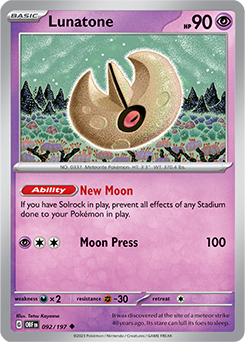 Lunatone and Solrock were cards that I was excited to play with when they were revealed—their effect is unique, as we have never had cards that can make one player ignore the effect of Stadium cards. However, a lot of the decks in the current format are just unable to support them. The Bench space required to use Lunatone and Solrock is often too much of a cost—decks like Gardevoir ex, Mew VMAX, and even Lost Zone variants need almost all of their Bench space to make their own engine work, or keep a spot open for Manaphy to protect their other cards. Being able to put Path to the Peak in your deck is a huge advantage right now, and I think Solrock and Lunatone are worth the deck space required to do so. They also act as a much more efficient Stadium counter than cards like Lost Vacuum or Pumpkaboo since their effect is always on. You no longer have to worry about your opponent disrupting your hand with Judge or Iono since you can just use Quick Search or Starbirth under Path to the Peak.
Lunatone and Solrock were cards that I was excited to play with when they were revealed—their effect is unique, as we have never had cards that can make one player ignore the effect of Stadium cards. However, a lot of the decks in the current format are just unable to support them. The Bench space required to use Lunatone and Solrock is often too much of a cost—decks like Gardevoir ex, Mew VMAX, and even Lost Zone variants need almost all of their Bench space to make their own engine work, or keep a spot open for Manaphy to protect their other cards. Being able to put Path to the Peak in your deck is a huge advantage right now, and I think Solrock and Lunatone are worth the deck space required to do so. They also act as a much more efficient Stadium counter than cards like Lost Vacuum or Pumpkaboo since their effect is always on. You no longer have to worry about your opponent disrupting your hand with Judge or Iono since you can just use Quick Search or Starbirth under Path to the Peak.
I structured the rest of the deck similarly to what the old Arceus VSTAR / Inteleon decks looked like, keeping in mind that we would be able to find any card at any time with Quick Search. While most variants of Arceus VSTAR decks choose not to include Battle VIP Pass, I included them here because of the quantity of Pokémon we need to get onto the Bench quickly. Your ideal board looks like this: Arceus VSTAR in the Active Spot, and a Bench comprised of Pidgeot ex, a backup Arceus VSTAR, Radiant Greninja, Solrock, and Lunatone. With just Nest Ball and Ultra Ball, I found that you never had enough search cards in your hand for all these Pokémon, but the “two for one” nature of Battle VIP Pass lets you find all of them with a small number of search cards.
Supporter Cards
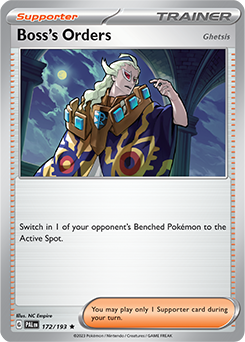 Cheren’s Care and Boss’s Orders are the ideal Supporter cards to use in the middle of the game. Cheren’s Care allows you to pick up any damaged Colorless-type Pokémon, letting you completely heal Arceus VSTAR! With Radiant Greninja’s Concealed Cards Ability, you can even discard the excess Energy cards that end up in your hand in order to draw more cards. There are many games with this deck where you’ll play both copies of Cheren’s Care on consecutive turns to get ahead in the damage race, so managing your Energy attachments is very important.
Cheren’s Care and Boss’s Orders are the ideal Supporter cards to use in the middle of the game. Cheren’s Care allows you to pick up any damaged Colorless-type Pokémon, letting you completely heal Arceus VSTAR! With Radiant Greninja’s Concealed Cards Ability, you can even discard the excess Energy cards that end up in your hand in order to draw more cards. There are many games with this deck where you’ll play both copies of Cheren’s Care on consecutive turns to get ahead in the damage race, so managing your Energy attachments is very important.
This is where the single Super Rod comes in. While at first Super Rod seems a little underpowered in this deck since we have excess copies of most Pokémon, it synergizes really well with Cheren’s Care. It lets us shuffle Water Energy that has been discarded to Concealed Cards or Ultra Ball back into the deck, so we can find them with another Trinity Nova! Without Super Rod in this deck, we run the risk of having all our Energy cards trapped in our hand, so I like to play Super Rod in this more controlling style of an Arceus VSTAR deck. Boss’s Orders is very important to this strategy since we are unlikely to ever take a one-hit Knock Out on a large Pokémon, so being able to switch in a damaged Pokémon to finish it off is extremely useful.
Energy Cards and Choice Belt
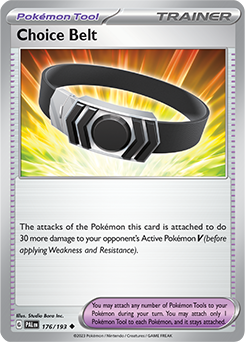 While only having two copies of Double Turbo Energy looks a bit weird since it is often what allows us to use Trinity Nova on Turn 2, the damage reduction has become much more relevant in the current format than in previous ones. This is because many Pokémon V that we want to Knock Out in one attack—Dragonite V, Giratina V, or other Arceus V, to name a few—have enough HP to require the full 200 damage from Trinity Nova plus the extra 30 from Choice Belt, which is not compatible with Double Turbo Energy. Instead of just using Double Turbo Energy to power out our Turn 2 Trinity Nova, I wanted to focus more on Melony to get us to that third Energy. We can easily discard Water Energy with Concealed Cards to allow us to use Melony.
While only having two copies of Double Turbo Energy looks a bit weird since it is often what allows us to use Trinity Nova on Turn 2, the damage reduction has become much more relevant in the current format than in previous ones. This is because many Pokémon V that we want to Knock Out in one attack—Dragonite V, Giratina V, or other Arceus V, to name a few—have enough HP to require the full 200 damage from Trinity Nova plus the extra 30 from Choice Belt, which is not compatible with Double Turbo Energy. Instead of just using Double Turbo Energy to power out our Turn 2 Trinity Nova, I wanted to focus more on Melony to get us to that third Energy. We can easily discard Water Energy with Concealed Cards to allow us to use Melony.
Jet Energy also helps us a lot with this—if Arceus V is on the Bench with two Energy attached, we can use Jet Energy to efficiently move it to the Active Spot. This saves us resources, since we don’t have to find both a switching card and an Energy! I really like this sequence because it helps us significantly in the Lost Zone Giratina matchup. If Giratina V uses Abyss Seeking and isn’t Knocked Out straight away, then we tend to fall behind quickly, so having three single Energy cards and a Choice Belt on an Arceus V is important to get you far ahead in that matchup. The Choice Belt is also helpful against the Lost Zone Toolbox, since it lets us deal with a Dragonite V in one attack and prevents us from getting overwhelmed in the early game. Choice Belt is a strong inclusion in Arceus VSTAR decks right now, and it nicely slots into this deck. V Guard Energy is also primarily in this deck because of the Lost Zone Giratina matchup. Preventing Lost Impact from taking a one-hit Knock Out on your Arceus VSTAR is very important and will often buy you an extra turn against anyone playing Giratina VSTAR.
Radiant Greninja and Raihan
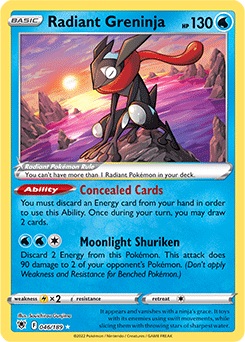 Radiant Greninja isn’t just a draw engine in this deck—you can even attack with it! It takes a bit of work, but you can use a combination of Raihan and Energy Switch to power it up in a single turn. Raihan can attach a Water Energy from your discard pile to Radiant Greninja, and then search up an Energy Switch to move a second Water Energy to it from one of your other Pokémon (probably Arceus VSTAR). Then, attach an Energy for the turn, and Moonlight Shuriken is ready to go. Surprise!
Radiant Greninja isn’t just a draw engine in this deck—you can even attack with it! It takes a bit of work, but you can use a combination of Raihan and Energy Switch to power it up in a single turn. Raihan can attach a Water Energy from your discard pile to Radiant Greninja, and then search up an Energy Switch to move a second Water Energy to it from one of your other Pokémon (probably Arceus VSTAR). Then, attach an Energy for the turn, and Moonlight Shuriken is ready to go. Surprise!
Raihan and Energy Switch are great cards in other ways, too. Raihan can help you easily power up another Arceus VSTAR if your previous one just got Knocked Out. You can even feel comfortable stashing Water Energy on Pokémon that you never intend to attack with, just to Energy Switch it later—even a Water Energy on a Solrock has value! Radiant Greninja is also very useful as a single-Prize Pokémon. Normally with this deck, your opponent is able to skip taking Knock Outs on single-Prize Pokémon completely since they can take the full six Prize cards via Arceus alone. However, if you can force your opponent to Knock Out your Radiant Greninja, they will still have to Knock Out three Arceus to win the game, essentially buying you a whole turn. In addition, whenever you play an Iono, they will draw one less card, making them much less likely to draw what they need!
While this deck might look rather simple, there are a lot of hidden complexities to it. Being able to search your deck for literally any single card opens up a whole range of possibilities both while building your deck and while playing. Good luck Quick Searching for whatever it is you might need—hopefully you can fly high to victory!
For more Pokémon TCG strategy and analysis, check out Pokemon.com/Strategy.

Natalie Millar
Natalie has been playing Pokémon casually since late 2013 but started attending more competitive tournaments in late 2017. She won the first Regional Championships after the pandemic in her home city of Brisbane, Australia, and has been attending most major tournaments since. Outside of Pokémon, she studied psychology, but it doesn’t help with reading opponents as much as you would think. You can find her at most major tournaments and can follow her on Twitter at @nataliem9999.
Source: Pokemon.com

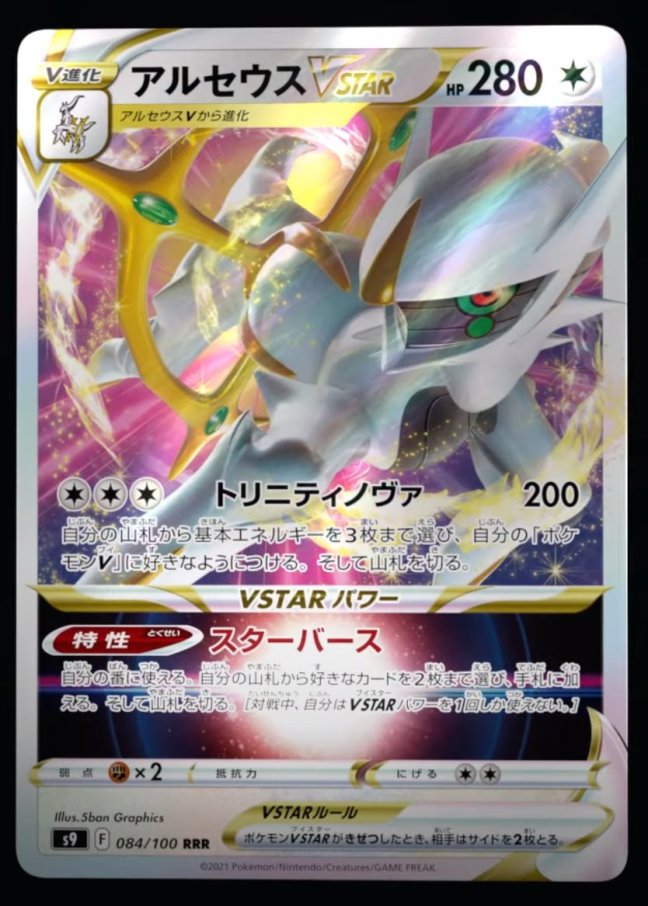
One thought on “Arceus VSTAR Winning Deck Strategy revealed for Pokémon TCG: Scarlet & Violet—Obsidian Flames”